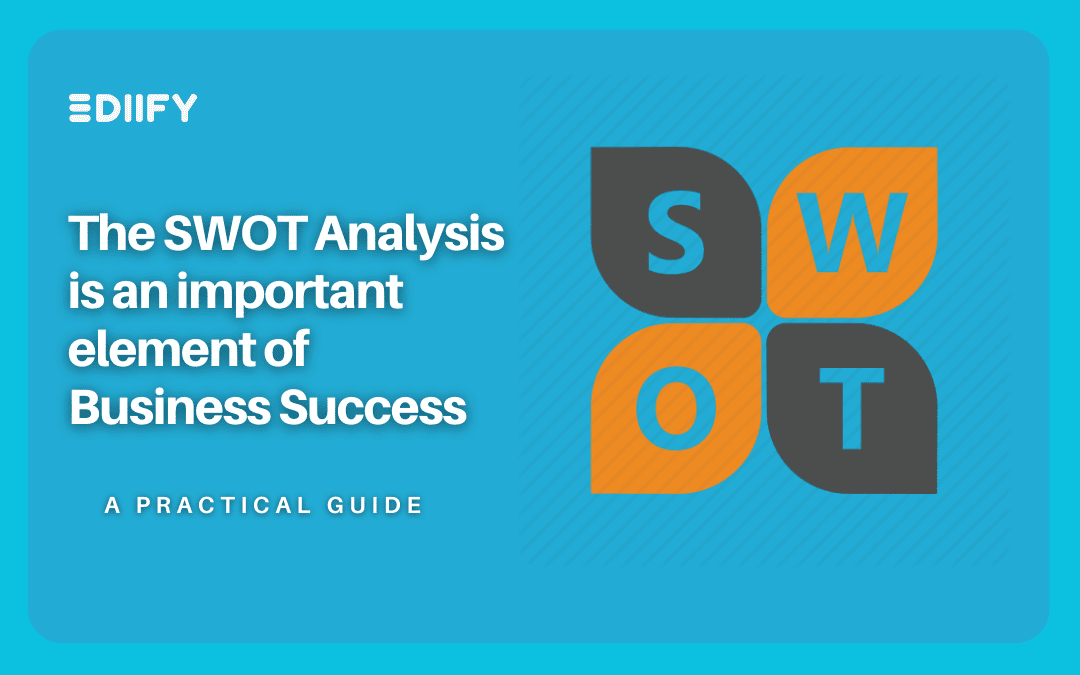
SWOT Analysis of 5 Companies: A Comprehensive Analysis
Feb 1, 2024 | EDIIFY Blogs
Introduction:
In the dynamic global business landscape, companies consistently face challenges while strategically leveraging opportunities to maintain a competitive edge. An indispensable tool in their strategic arsenal is the SWOT analysis – a comprehensive framework evaluating Strengths, Weaknesses, Opportunities, and Threats. This blog aims to delve into the SWOT analyses of 5 companies, shedding light on the factors that shape their corporate strategies.

-
Apple Inc:
Strengths:
- Exceptionally strong brand equity and customer loyalty.
- An innovative product portfolio, including iconic devices like the iPhone, iPad, and Mac.
- Efficient supply chain management.
Weaknesses:
- The premium pricing strategy may limit market share in certain segments.
- Dependency on the success of product launches for revenue spikes.
Opportunities:
- Strategic expansion into emerging markets.
- Rising demand for wearables and services.
- Diversification into new technology sectors.
Threats:
- Intense competition in the tech industry.
- Dependence on third-party suppliers.
Take a look at the below blog the competitors of Apple
https://ediify.com/project/competitors-of-apple-what-you-need-to-know/
-
Amazon.com Inc.:
Strengths:
- Dominant market position in e-commerce.
- A vast global fulfillment network.
- Ongoing growth in the Amazon Web Services (AWS) cloud computing division.
Weaknesses:
- Concerns regarding worker conditions.
- Reliance on third-party sellers.
Opportunities:
- Diversifying into new markets and industries.
- Continued growth in the cloud computing market.
Threats:
- Regulatory challenges.
- Intense competition in both e-commerce and cloud services.
-
Tesla, Inc.:
Strengths:
- Pioneer in electric vehicle technology.
- A strong focus on sustainability and renewable energy.
- High demand for Tesla vehicles.
Weaknesses:
- Production and supply chain challenges.
- Volatility in stock prices.
Opportunities:
- Global expansion of the electric vehicle market.
- Advancements in autonomous driving technology.
Threats:
- Increasing competition in the electric vehicle space.
- External factors impacting the automotive industry.
-
The Coca-Cola Company:
Strengths:
- Iconic brand and global presence.
- Extensive distribution network.
- Diversified product portfolio.
Weaknesses:
- Health concerns related to sugary beverages.
- Dependence on carbonated drinks.
Opportunities:
- Expanding into healthier beverage options.
- Tapping into growing demand in emerging markets.
Threats:
- Health and wellness trends impacting sugary drink sales.
- Intense competition in the beverage industry.
-
Microsoft Corporation:
Strengths:
- Dominance in the software market with products like Windows and Office.
- Strong presence in cloud computing with Azure.
- Continuous innovation through strategic acquisitions.
Weaknesses:
- Dependency on the PC market.
- Limited success in certain consumer-focused products.
Opportunities:
- Expanding further in the cloud computing market.
- Integrating artificial intelligence into products.
Threats:
- Rapid technological changes affecting product relevance.
- Intense competition in both the software and cloud computing sectors.
Take a view at the below blog Big Competitor of Microsoft and IBM
https://ediify.com/project/big-competitor-of-microsoft-and-ibma-comprehensive-guide/
Conclusion:
The SWOT analyses of 5 companies offer insights into the intricate dynamics that influence their strategic decisions. Recognizing strengths, addressing weaknesses, seizing opportunities, and mitigating threats are crucial steps in sustaining and enhancing market positions. As these companies evolve, their adaptability and strategic acumen will play pivotal roles in navigating the ever-changing business landscape.

For more information visit the mentioned website













